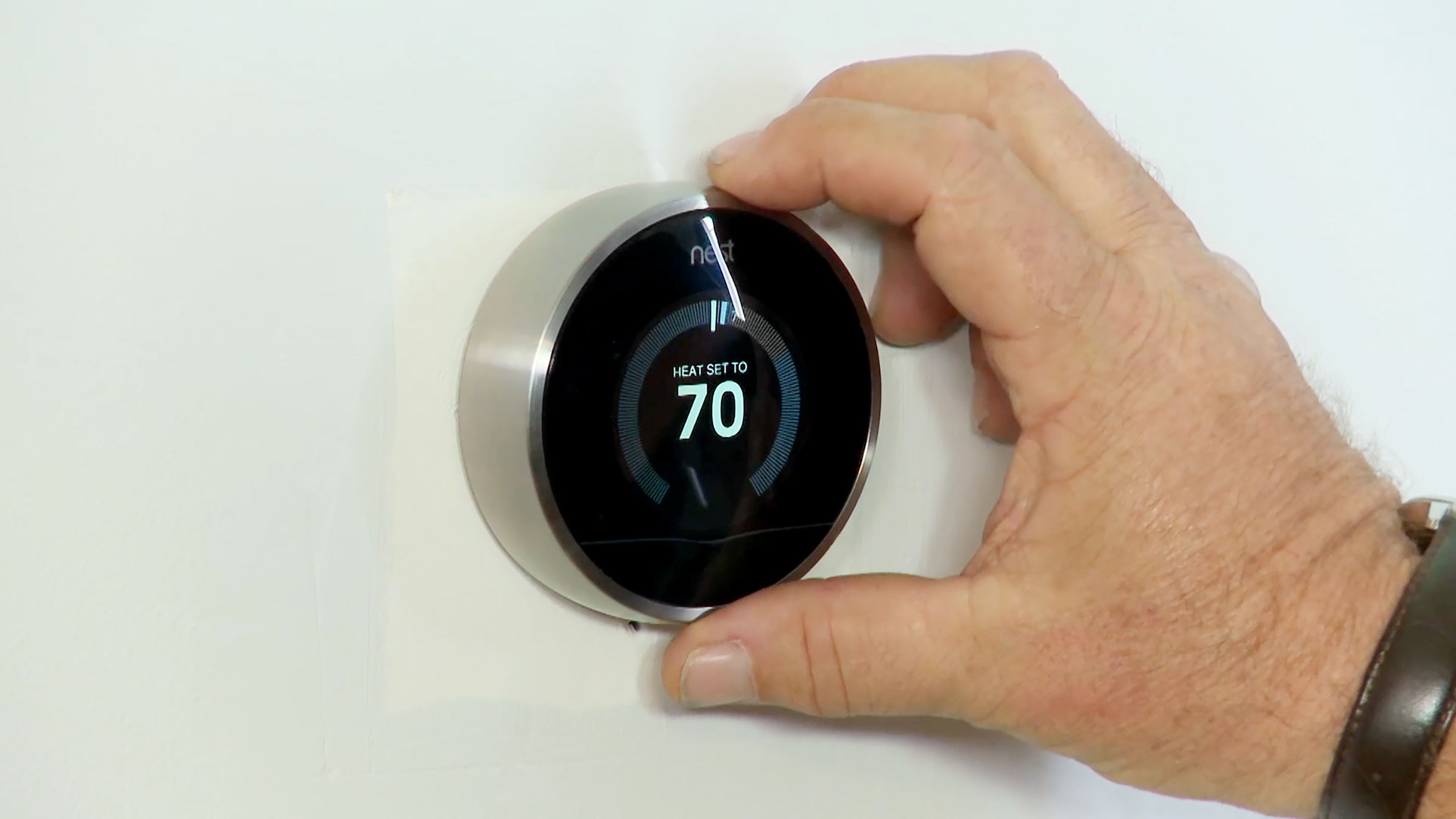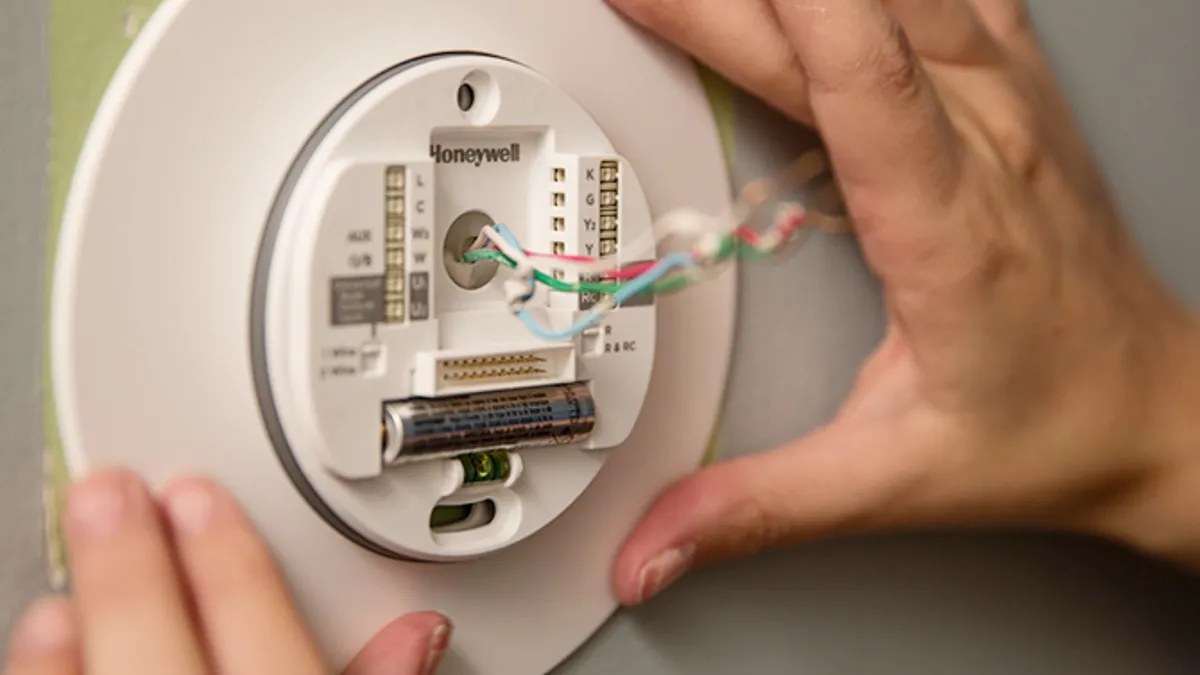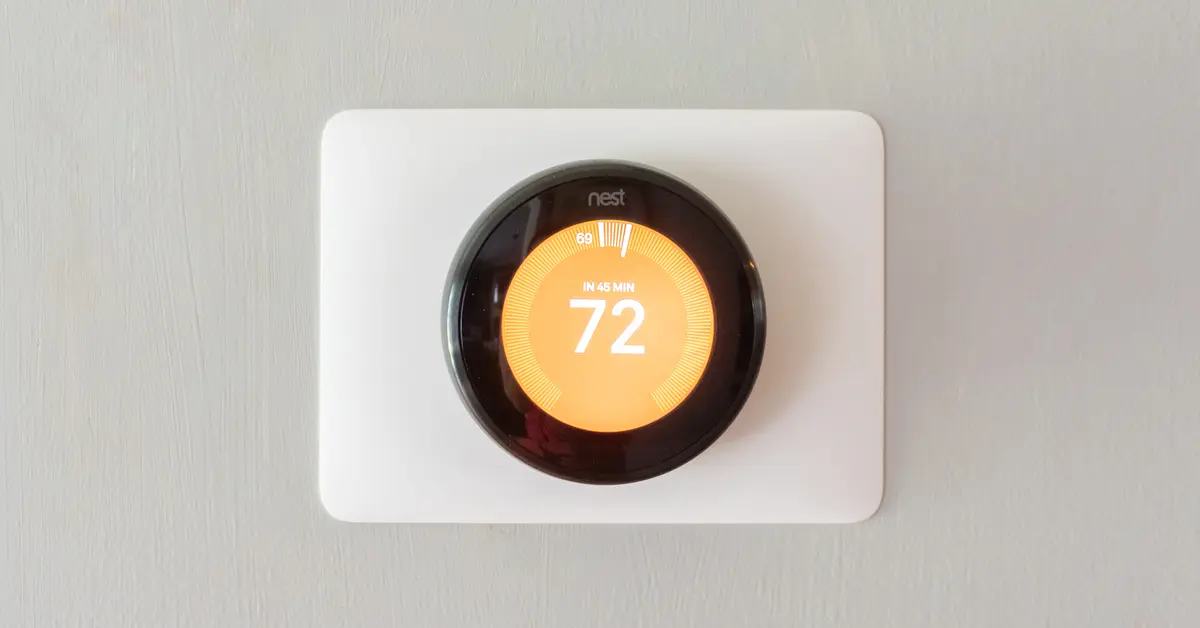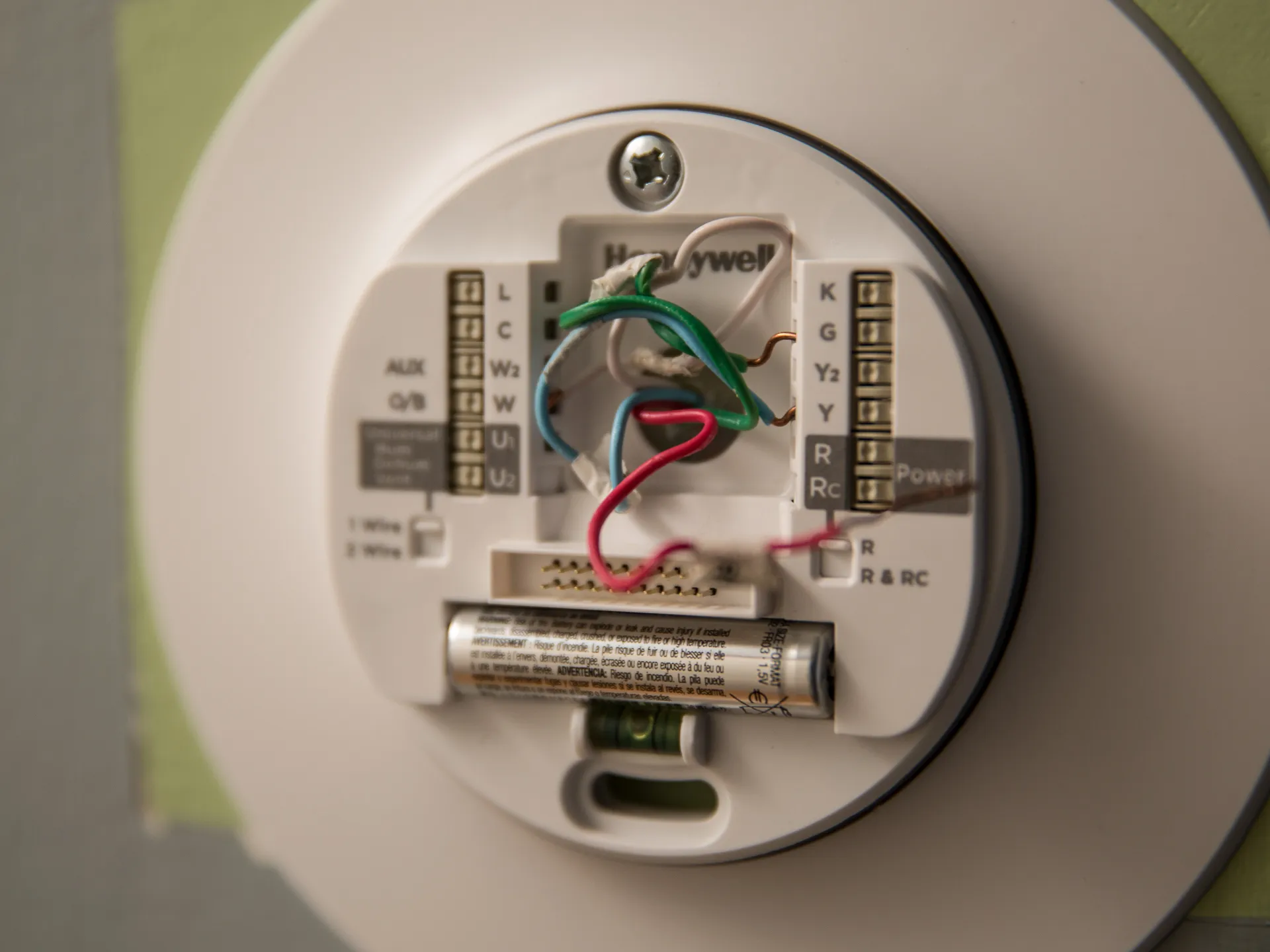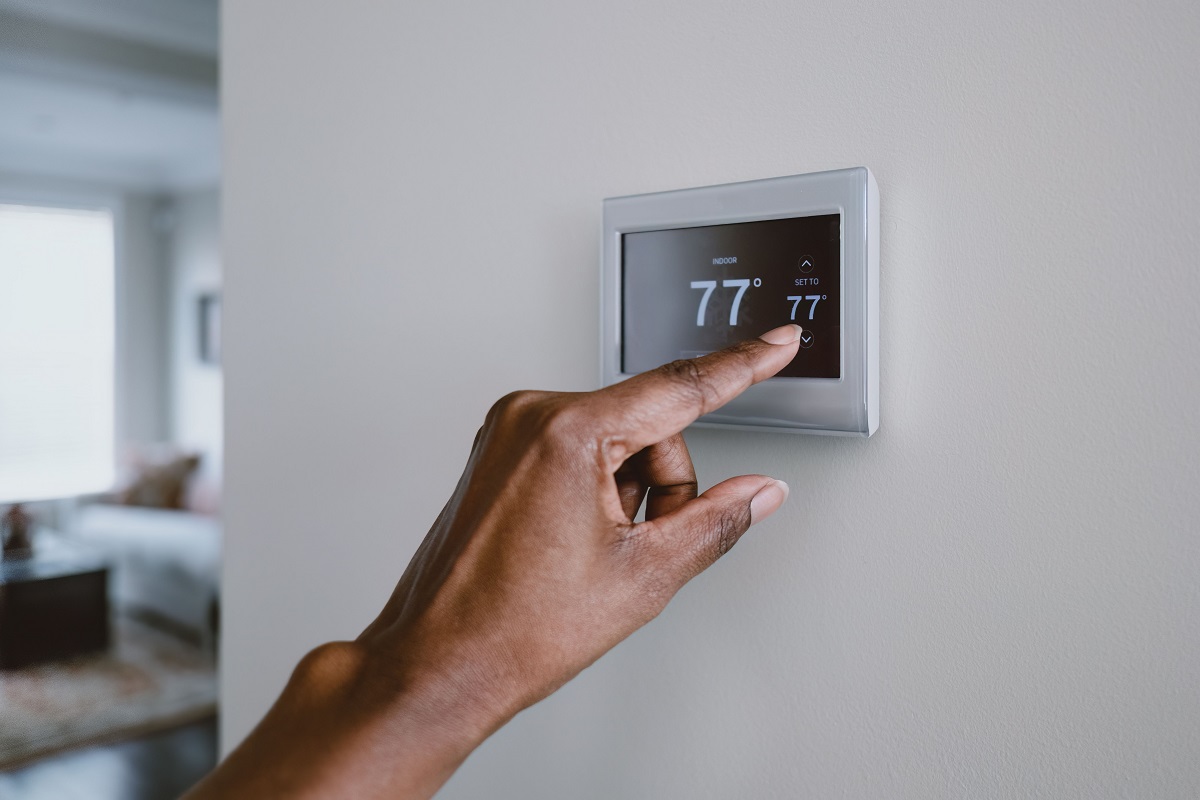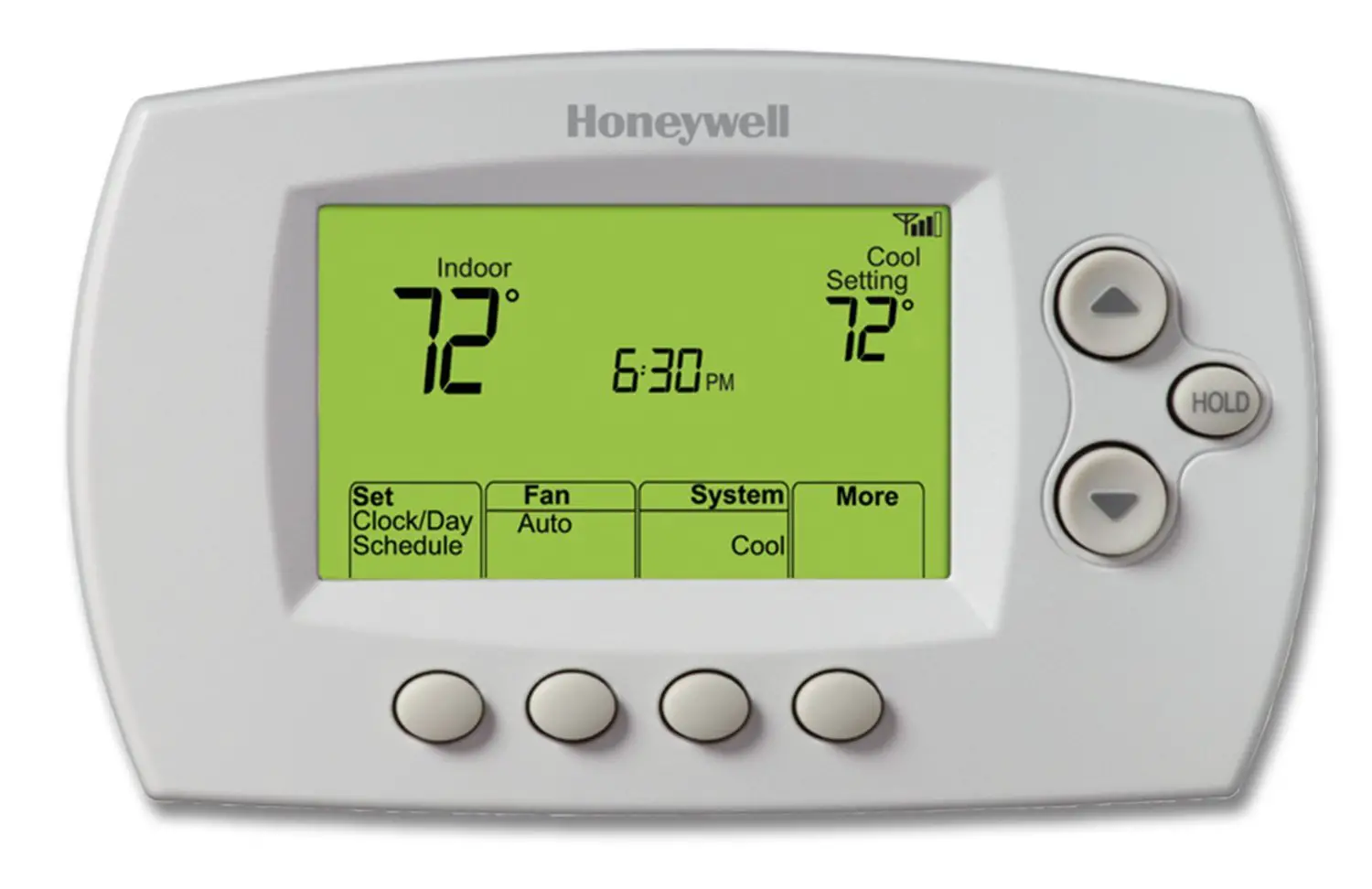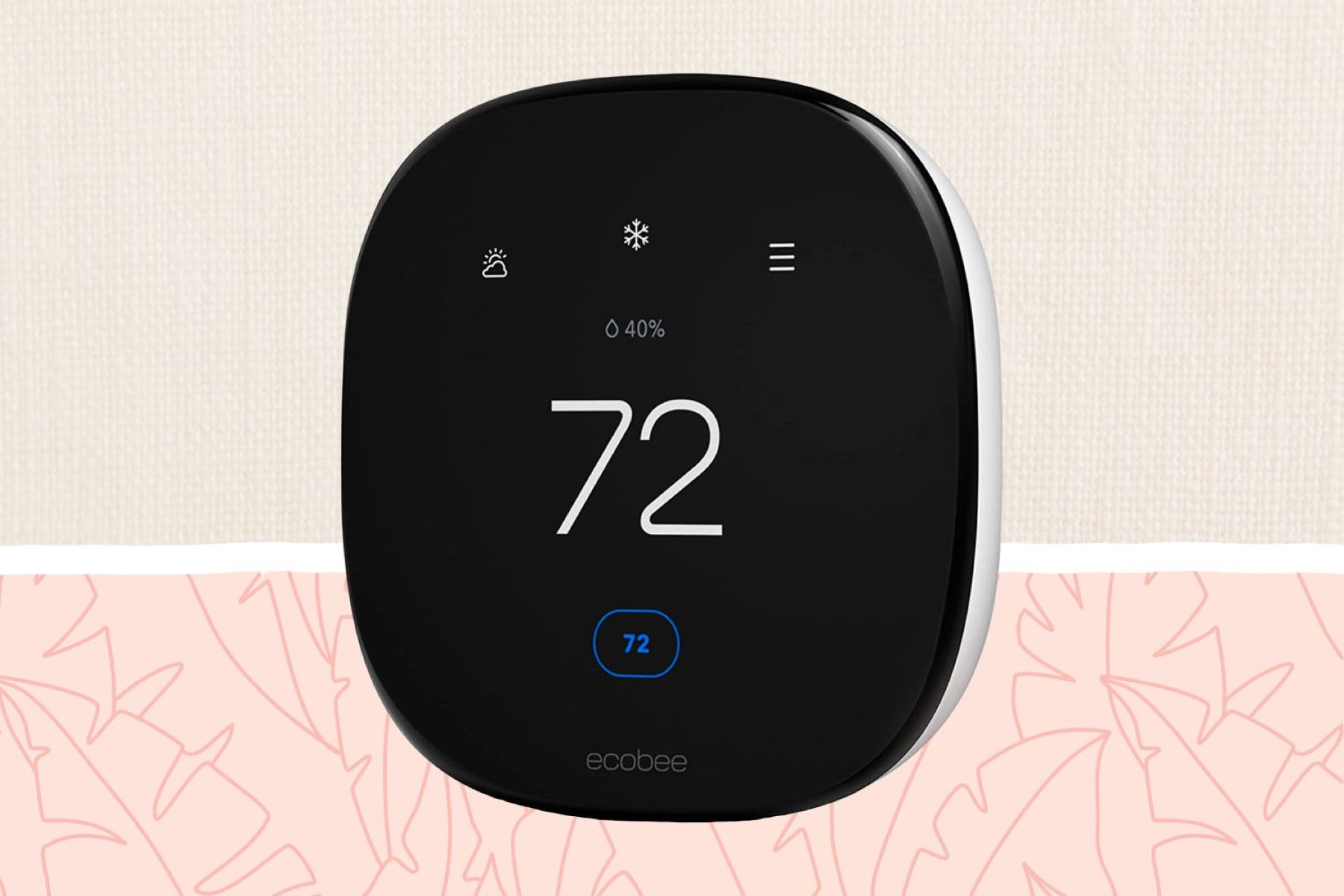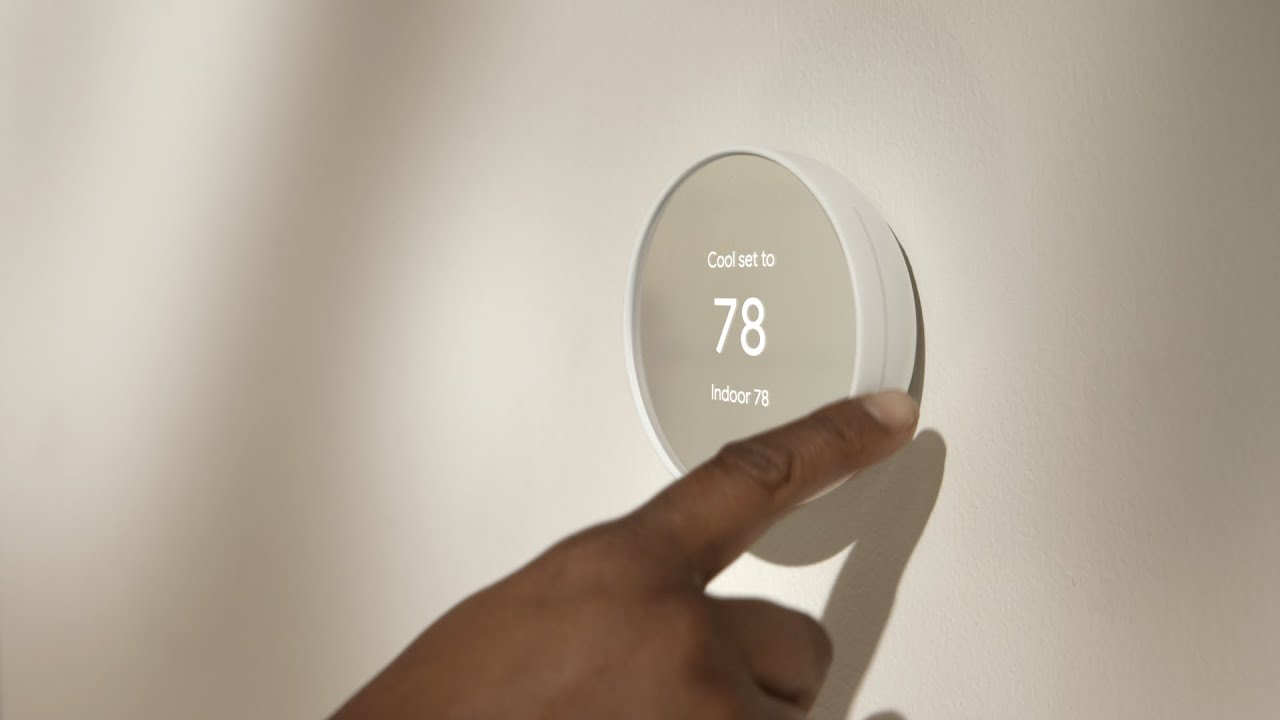Smart Thermostat Compatibility with HVAC Systems
When it comes to upgrading your home to a smart thermostat, one of the key considerations is ensuring that it is compatible with your HVAC (Heating, Ventilation, and Air Conditioning) system. While smart thermostats offer many benefits, such as energy savings, convenience, and remote control, not all of them are designed to work seamlessly with every HVAC system. Therefore, it’s important to do some research and understand the compatibility requirements before making a purchase.
The first step in determining smart thermostat compatibility with your HVAC system is to identify the type of HVAC system you have. There are several common types, including central heating and cooling systems, heat pumps, and radiant heating systems. Each of these systems has specific requirements and may require a compatible smart thermostat.
Once you know the type of HVAC system you have, check the manufacturer’s recommendations for compatible smart thermostats. Many HVAC manufacturers have a list of recommended models or partnerships with specific smart thermostat brands. This information can often be found on the manufacturer’s website or by contacting their customer support.
In addition to manufacturer recommendations, it’s essential to review the specifications of the smart thermostat you are considering. Look for compatibility with your HVAC system type, voltage requirements, and any additional features that may be necessary for proper functionality. Some smart thermostats are designed to work with a wide range of HVAC systems, while others are more specific in their compatibility.
Another factor to consider is whether your HVAC system requires specific compatibility with a smart thermostat. Some systems, especially older ones or those with specialized features, may need a smart thermostat that is specifically designed to work with them. Researching this requirement will help ensure that your new smart thermostat will integrate seamlessly with your HVAC system.
While conducting your research and reviewing specifications, if you are unsure about the compatibility of a smart thermostat with your HVAC system, it’s always a good idea to consult with an HVAC professional. They can provide expert advice and guidance based on your specific HVAC system’s needs.
Lastly, don’t forget to consider additional features and technology that the smart thermostat offers. While compatibility is crucial, you may also want to explore other features such as Wi-Fi connectivity, voice control, energy usage reports, and integration with other smart home devices. Finding a smart thermostat that not only works with your HVAC system but also enhances your overall home automation experience can be a significant advantage.
In summary, smart thermostat compatibility with your HVAC system is essential for a seamless installation and optimal performance. By identifying your HVAC system type, checking manufacturer recommendations, reviewing smart thermostat specifications, researching specific compatibility requirements, consulting with HVAC professionals if needed, and considering additional features, you can make an informed decision when choosing the right smart thermostat for your home.
Determine Your HVAC System Type
Before diving into the world of smart thermostats, it’s important to understand the type of HVAC (Heating, Ventilation, and Air Conditioning) system your home has. Each HVAC system has its own unique characteristics and requirements, and knowing which type you have will help you determine the compatibility of smart thermostats. Here are some common HVAC system types and how to identify them:
- Central Heating and Cooling Systems: This is the most common type of HVAC system found in residential homes. It consists of a furnace or boiler for heating and a central air conditioner for cooling. To determine if you have a central heating and cooling system, look for a large metal unit, usually located in the basement, that contains a blower and heating elements or a combustion chamber.
- Heat Pumps: Heat pumps are another popular type of HVAC system that provide both heating and cooling. Unlike central heating and cooling systems, heat pumps use the same unit for both functions. To identify if you have a heat pump, look for a large outdoor unit that has a fan and is connected to the indoor unit through refrigerant lines.
- Radiant Heating Systems: Radiant heating systems use pipes or electric heating elements in the floors, walls, or ceilings to provide warmth. This type of system does not use forced air like central heating systems. To determine if you have a radiant heating system, look for pipes or heating elements in the floors, or if your home has baseboard heaters.
Identifying your HVAC system type is the first step in determining smart thermostat compatibility. Different smart thermostats are designed to work with specific HVAC system types, so knowing which type you have will help narrow down your options and ensure a successful installation.
In addition to the system type, it’s also important to know the voltage requirements of your HVAC system. Some smart thermostats require a specific voltage to operate properly. To determine the voltage of your HVAC system, consult the manufacturer’s documentation or contact an HVAC professional.
In summary, understanding your HVAC system type is crucial when selecting a smart thermostat. By identifying whether you have a central heating and cooling system, a heat pump, or a radiant heating system, you can narrow down your options and choose a smart thermostat that is compatible with your specific HVAC system. Additionally, don’t forget to consider the voltage requirements of your system to ensure a seamless installation.
Check Manufacturer Recommendations
When considering a smart thermostat for your HVAC system, it’s important to check the manufacturer’s recommendations. HVAC manufacturers often have a list of recommended smart thermostat models or partnerships with specific brands. These recommendations are based on thorough testing and compatibility assessments, ensuring optimal performance and compatibility with your HVAC system.
One way to find manufacturer recommendations is by visiting the manufacturer’s website. Most HVAC manufacturers have a support or resources section that provides information on compatible smart thermostats. Look for a list of approved models or a dedicated page discussing smart thermostat compatibility.
In addition to the website, you can also contact the manufacturer’s customer support for specific guidance. The customer support team can provide you with valuable information regarding compatible smart thermostat models and any specific considerations for your HVAC system.
Checking manufacturer recommendations is crucial because it ensures that the smart thermostat you choose will work seamlessly with your HVAC system. By selecting a smart thermostat that is approved by the manufacturer, you can minimize the risk of compatibility issues, enjoy reliable performance, and potentially benefit from enhanced features designed specifically for your system.
Keep in mind that manufacturer recommendations may vary depending on the model and age of your HVAC system. Newer systems may have a broader range of compatible smart thermostats, while older systems may have more limited options. Be sure to check the recommendations specific to your system to make an informed decision.
By following manufacturer recommendations, you can have peace of mind knowing that your smart thermostat is chosen based on compatibility and reliability. This will result in a smooth installation process and optimal performance without any compatibility hiccups.
In summary, checking the manufacturer’s recommendations is an essential step in selecting a smart thermostat for your HVAC system. By referring to the manufacturer’s website and contacting their customer support, you can obtain a list of recommended models and ensure compatibility with your specific HVAC system. This will help you make an informed decision and enjoy seamless integration between your smart thermostat and HVAC system.
Review Smart Thermostat Specifications
When considering a smart thermostat for your HVAC system, it’s important to review the specifications of the thermostat to ensure compatibility and optimal functionality. Smart thermostats come in various models and brands, each with its own set of features and requirements. By reviewing the smart thermostat specifications, you can make an informed decision that fits your HVAC system’s needs.
First and foremost, check if the smart thermostat is compatible with your specific HVAC system type. Some thermostats are designed to work with a wide range of systems, while others are more specific in their compatibility. Look for information regarding compatibility with central heating and cooling systems, heat pumps, radiant heating systems, or any other specific HVAC system types.
In addition to compatibility, pay attention to the voltage requirements of the smart thermostat. Some thermostats may require a specific voltage to operate correctly with your HVAC system. Make sure the voltage requirements match your system to avoid any potential issues or damage during installation.
Consider the additional features and technology offered by the smart thermostat. While compatibility is essential, you may also want to explore other features that enhance the functionality and convenience of your HVAC system. Look for features such as Wi-Fi connectivity, voice control compatibility, energy usage reports, and integration with other smart home devices. Decide which features are important to you and ensure that the smart thermostat you choose meets those requirements.
Review the physical design and display of the smart thermostat. Consider factors such as the size, shape, and display resolution. A clear and easily readable display is crucial for quick and convenient monitoring of temperature settings and other information.
Another important consideration is the user interface of the smart thermostat. Look for a thermostat that has an intuitive and user-friendly interface, whether it is a touchscreen display or buttons for navigation. A user-friendly interface will make it easier to set temperature schedules, adjust settings, and access other features of the thermostat.
Finally, check if the smart thermostat comes with a mobile app or web interface for remote control and monitoring. This allows you to control the thermostat from anywhere through your smartphone or computer. Ensure that the app or web interface is compatible with your device and offers the functionality you desire.
In summary, reviewing the smart thermostat specifications is crucial to ensure compatibility and functionality with your HVAC system. Consider the compatibility with your HVAC system type and voltage requirements. Evaluate the additional features, design, user interface, and remote control capabilities to choose a smart thermostat that meets your specific needs and enhances your overall home comfort experience.
Research if HVAC Compatibility is Required
When considering a smart thermostat for your HVAC system, it’s important to research if HVAC compatibility is required for optimal performance. While many smart thermostats are designed to work with a wide range of HVAC systems, some systems may have specific requirements or limitations that need to be taken into account.
Start by understanding the specific compatibility requirements of your HVAC system. Consult the documentation provided with your system or reach out to the manufacturer for detailed information. Some HVAC systems, especially older models or those with unique features, may require a smart thermostat that is specifically designed to work with them.
Research the compatibility guidelines provided by the smart thermostat manufacturer as well. They may provide information on the recommended HVAC system types and any specific compatibility requirements. It’s essential to consider these guidelines to ensure the smart thermostat you choose will integrate seamlessly with your HVAC system.
Keep in mind that compatibility requirements may vary depending on the specific model and age of your HVAC system. Newer HVAC systems may have broader compatibility with smart thermostats, while older systems may have more limited options. Researching the requirements specific to your system will help you understand any limitations or additional considerations to keep in mind.
Another aspect to consider is system wiring compatibility. Some HVAC systems may require specific wiring configurations for the smart thermostat to work correctly. Research the wiring requirements of your HVAC system and ensure that the smart thermostat you choose is compatible with your existing wiring setup.
If you are unsure about the compatibility of a smart thermostat with your HVAC system, it’s always a good idea to consult with an HVAC professional. They have the expertise and knowledge to assess the compatibility of your system and provide valuable insights and recommendations. They can help you understand any potential limitations or modifications required for successful installation.
By researching if HVAC compatibility is required, you can ensure that the smart thermostat you choose will work seamlessly with your HVAC system. Taking the time to understand the requirements and limitations will help you make an informed decision and can prevent any compatibility issues during the installation process.
In summary, it’s important to research if HVAC compatibility is required when selecting a smart thermostat. Understand the compatibility requirements of your HVAC system and consult the guidelines provided by the smart thermostat manufacturer. Consider any specific wiring requirements and, if needed, seek advice from an HVAC professional. By conducting thorough research, you can choose a smart thermostat that is fully compatible with your HVAC system, ensuring optimal performance and functionality.
Consult with HVAC Professional if Unsure
If you’re unsure about the compatibility or installation process of a smart thermostat with your HVAC system, it’s highly recommended to consult with an HVAC professional. These professionals have the expertise and knowledge to assess your system’s compatibility and provide valuable guidance to ensure a seamless integration.
One of the primary advantages of consulting with an HVAC professional is their ability to determine the compatibility of a smart thermostat with your specific HVAC system. They have experience working with a variety of systems and can assess the compatibility requirements, taking into account factors such as system type, wiring configurations, voltage needs, and any other unique specifications of your system.
An HVAC professional can also provide personalized recommendations based on your specific needs and preferences. They can help you understand the pros and cons of different smart thermostat models, taking into consideration factors such as energy efficiency, features, and ease of use. Their expertise can help you make an informed decision that aligns with your budget and desired level of functionality.
When it comes to installation, an HVAC professional can ensure that the smart thermostat is installed correctly and safely. They will have the necessary tools and knowledge to handle any wiring modifications, if required, and ensure that all connections are secure. This helps prevent any potential damage to your HVAC system and ensures the optimal performance of both the system and the smart thermostat.
Furthermore, consulting with an HVAC professional can save you time and effort. They can handle the entire installation process, including any necessary adjustments or programming, while you sit back and relax. Their expertise can also help troubleshoot any issues that may arise, ensuring that the smart thermostat functions as intended.
Keep in mind that while consulting with an HVAC professional may incur additional costs, it’s an investment worth considering. The insight and expertise they provide can help you make the right choices and avoid potential problems down the line. It’s a way to ensure a smooth transition to a smart thermostat and peace of mind in knowing that your HVAC system is in capable hands.
In summary, when unsure about the compatibility or installation of a smart thermostat with your HVAC system, consulting with an HVAC professional is highly advisable. Their expertise can help assess compatibility, provide personalized recommendations, ensure proper installation, and troubleshoot any issues. The knowledge and assistance they offer can save you time, effort, and potential headaches, leaving you with a smart thermostat that integrates seamlessly with your HVAC system.
Consider Additional Features and Technology
When choosing a smart thermostat for your HVAC system, it’s important to consider the additional features and technology that the thermostat offers. While compatibility with your HVAC system is crucial, exploring the extra features can enhance your overall experience and make your home more comfortable and energy-efficient.
One important feature to consider is Wi-Fi connectivity. A smart thermostat with Wi-Fi allows you to control and monitor your HVAC system remotely from your smartphone or other connected devices. This feature gives you the flexibility to adjust temperature settings, create schedules, and monitor energy usage even when you’re not at home.
Voice control compatibility is another popular feature that many smart thermostats offer. With voice control, you can use virtual assistants like Amazon Alexa or Google Assistant to control your HVAC system using voice commands. This hands-free functionality adds convenience and makes it easier to manage your home’s temperature settings.
Energy usage reports and insights are valuable features that can help you track and optimize your energy consumption. Some smart thermostats provide detailed reports that show how much energy your HVAC system is using and offer suggestions for energy-saving adjustments. This information empowers you to make more informed decisions and potentially lower your energy bills.
Integration with other smart home devices is another aspect to consider. If you have other connected devices in your home, such as smart lights, smart locks, or a home security system, look for smart thermostats that can integrate and collaborate with these devices. This allows for a more seamless and interconnected smart home experience.
Temperature zoning capabilities are worth considering if you have a large home with multiple HVAC zones. Some smart thermostats offer the ability to control temperature independently in different areas of your home, providing personalized comfort and energy savings.
Add-on sensors and room occupancy detection are features that can further enhance your smart thermostat’s performance. These sensors can detect occupancy in specific rooms and adjust the temperature accordingly, ensuring that you’re only heating or cooling occupied spaces and avoiding unnecessary energy waste.
Finally, assess the user interface and ease of use of the smart thermostat. Look for a thermostat with an intuitive interface and easy-to-navigate controls. A clear and readable display is also important for quick access to temperature settings and other information.
In summary, considering the additional features and technology offered by smart thermostats can help you make a more informed decision. Features such as Wi-Fi connectivity, voice control compatibility, energy usage reports, integration with other smart devices, temperature zoning, and advanced sensors can enhance your overall home comfort and energy efficiency. Assessing these features allows you to choose a smart thermostat that aligns with your specific needs and preferences.







